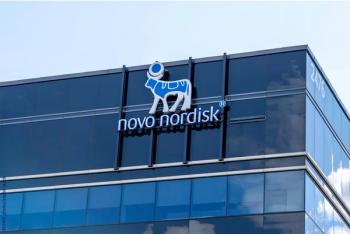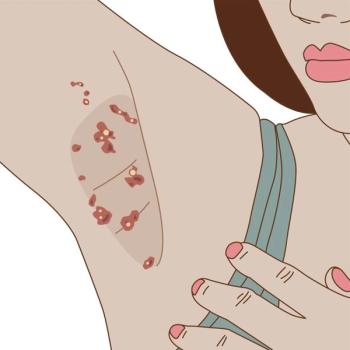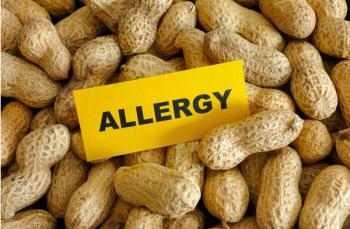
Noninvasive Fibroid Surgery Promising, But Still Not a Contender
BOSTON -- Noninvasive uterine fibroid surgery using MRI-guided ultrasound appears to significantly reduce symptoms but does not yet measure up to other minimally invasive fibroid procedures.
BOSTON, May 30 -- Noninvasive uterine fibroid surgery using MRI-guided ultrasound appears to significantly reduce symptoms but does not yet measure up to other minimally invasive fibroid procedures.
One-year symptom improvement with focused ultrasound surgery lagged behind that previously reported for uterine artery embolization (mean change in score 29.4 versus a decrease from 58.6 to 19.32). So found Fiona M. Fennessy, M.D., Ph.D., of Harvard and Brigham and Women's Hospital here, and colleagues.
The long-term extension findings of the pivotal trial of MRI-guided ultrasound fibroid surgery were published in the June issue of the journal Radiology.
Technical improvements to increase the relatively small volume of tissue treated may be necessary to bring MRI-guided ultrasound up to par, Dr. Fennessy wrote.
The prospective, multicenter, continued-access study included 160 adult premenopausal women with symptomatic fibroids but no future childbearing plans.
After a pre-treatment MRI and pregnancy test, they underwent ultrasound beam surgery monitored via MRI to assure adequate temperature increase to cut off the blood supply to fibroids but not to surrounding tissue.
From April 2003 through April 2004, 96 consecutive patients were treated according to the original guidelines allowing a treatment time up to 120 minutes and fibroid volume up to 100 cc (about 6 cm in diameter) or 33% of total volume.
Then, from May through December 2004, 64 consecutive patients were treated under an optimized protocol allowing an extra hour of treatment time and a maximum fibroid treatment volume of 150 ccs (about 7 cm in diameter), or 33% of total volume of fibroids on the outer uterine wall and 50% of volume of other fibroids.
The protocol groups were similar in age (about 46), body mass index, race, hormonal status, and total fibroid volume load (385.0 cm3 original protocol versus 498.4 cm3 modified protocol, (P=0.1).
Patients were sedated but conscious and gave feedback on pain after every ultrasound to add to MRI temperature feedback.
Upon completion of treatment, MR imaging with a contrast agent was done to measure the nonperfused volume. Patients returned periodically for assessment and to complete uterine fibroid symptom and quality of life questionnaires.
At one-year, only 47.5% of patients were available for evaluation; 37% sought other treatment and others were lost to follow-up.
Of the remaining patients, 79.2% had a clinically significant 10-point or greater improvement in symptom severity score three months and six months after treatment. That improvement was sustained at 78% of patients at one year, the investigators said.
Women treated with the modified protocol were more likely to show a 10-point improvement in symptom severity scores than women on the original protocol (88% versus 74% at six months and 91% versus 73% at one year).
For the primary endpoint, the overall study population had a significant decrease in mean symptom severity score at all time points compared with baseline (35.5 at three months, 32.3 at six months, and 32.7 at 12 months versus 62.1 at baseline, P<0.001).
Both treatment guidelines significantly improved symptom severity scores out to 12 months.
The early improvement was better with the modified treatment protocol, the researchers noted. At three months, there was a 30.9-point decrease compared with a 23.8-point decrease with the original protocol (P=0.037).
The response rate was similar between groups at six and 12 months, which the researchers suggested may have been caused by a dwindling patient population.
The improvement significantly correlated with the percentage of the total fibroid volume load that became nonperfused with ultrasound treatment, which was significantly higher with the modified protocol (25.79% versus 16.65%, P<0.001).
A 10-point symptom severity improvement was 2.8-fold more likely at one year for those treated with the modified protocol who had at least a 30% nonperfused volume than those who had less of a treatment effect (P<0.038).
"The implication of this finding is that greater clinical symptom reduction is likely achieved with maximal nonperfused volume," the researchers wrote. "Therefore, we believe that it is an important goal to treat as much tissue as feasible and as safely as possible in each woman."
Notably, the modified protocol led to fewer adverse events overall (25% reported no adverse events versus 13% in the original protocol group) though the difference was not significant (P=0.06).
No serious adverse events were reported in either group, the researchers said. However, they acknowledged, in the original treatment protocol group, two important adverse events occurred. One case of paresthesia at the intravenous cannula site failed to resolve within 14 days. One case of mild sonication-related leg pain was reported to the FDA.
The researchers concluded, "Improvements in technique have lead to greater clinical response and safety and fewer adverse events."
However, they noted, the study was limited by its single-treatment-arm design precluding comparison with patients who were not treated or who were treated with the prevailing therapy -- hysterectomy -- or alternatives, such as uterine artery embolization.
They also failed to report intent-to-treat outcomes. Longer-term evaluation is needed, they said, and is underway with 24- and 36-month follow-up in progress.
While the clinical improvements seen with MRI-guided focused ultrasound surgery are not greater than those with uterine artery embolization, the investigators said it should be taken into account that guidelines limit ultrasound surgery to attaining a relatively small nonperfused volume.
"Future technical improvements in MR imaging-guided focused ultrasound surgery, which would allow for a greater nonperfused volume, may provide greater symptom severity score decrease," they wrote.
Newsletter
Enhance your clinical practice with the Patient Care newsletter, offering the latest evidence-based guidelines, diagnostic insights, and treatment strategies for primary care physicians.















































































































































































































































































